
Cutting Types, Leaf Cuttings
Plants that propagate from petiole-and-leaf cuttings: Other plant species will root from a petiole with a leaf attached. Petioles are small stems that support a leaf. To take a petiole-with-leaf cutting, snip the bottom of the petiole just where it emerges from the main stem. Make the cut at an angle so the tip of the petiole makes a sharp point.
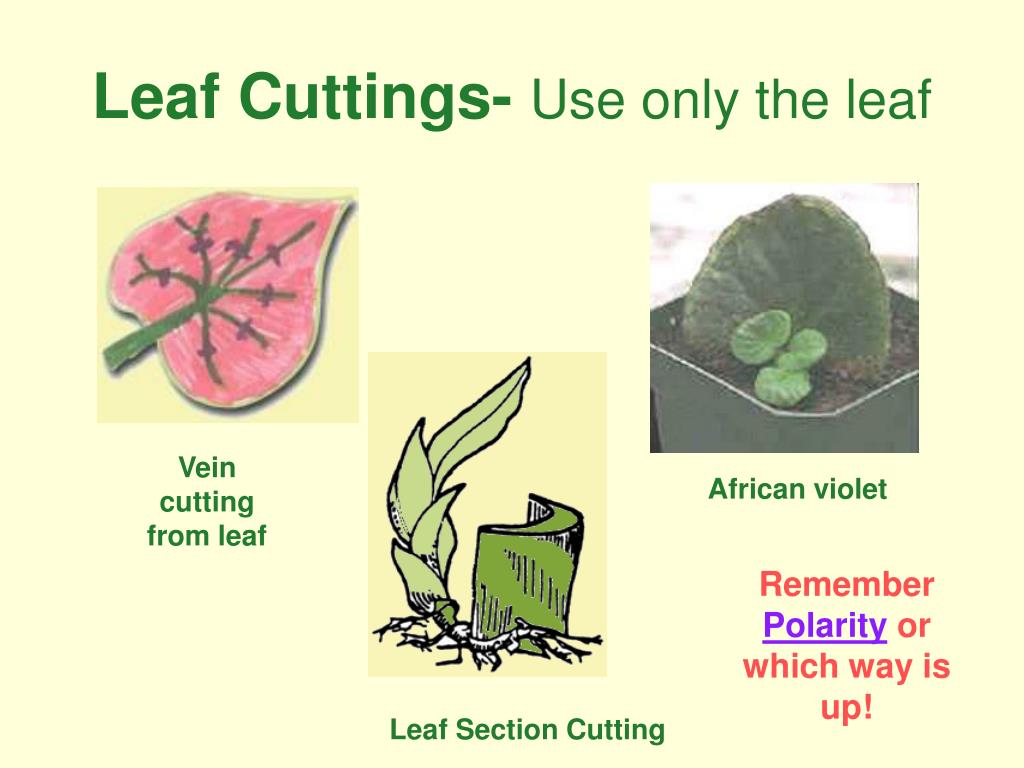
PPT Plant Propagation PowerPoint Presentation, free download ID6132614
Sand or sand and peat moss (1:1) are satisfactory rooting media for leaf cuttings. For leaf cuttings, depending on the species the whole leaf blade, leaf blade sections or the leaf with petiole is used. So, leaf cuttings can be classified in to: 1. Leaf blade cutting 2. Leaf vein cutting / Leaf slashing 3. Leaf margin cutting 4. Leaf bud cutting

Diagram of a leaf showing typical features of a dicot Flickr
Leaf-bud Cuttings Leaf-bud cuttings are used for many trailing vines and when space or cut-ting material is limited. Each node on a stem can be treated as a cutting. This type of cutting consists of a leaf blade, pet-iole, and a short piece of stem with an attached axillary bud. Place cuttings in the medium with the bud covered (1/ 2 to
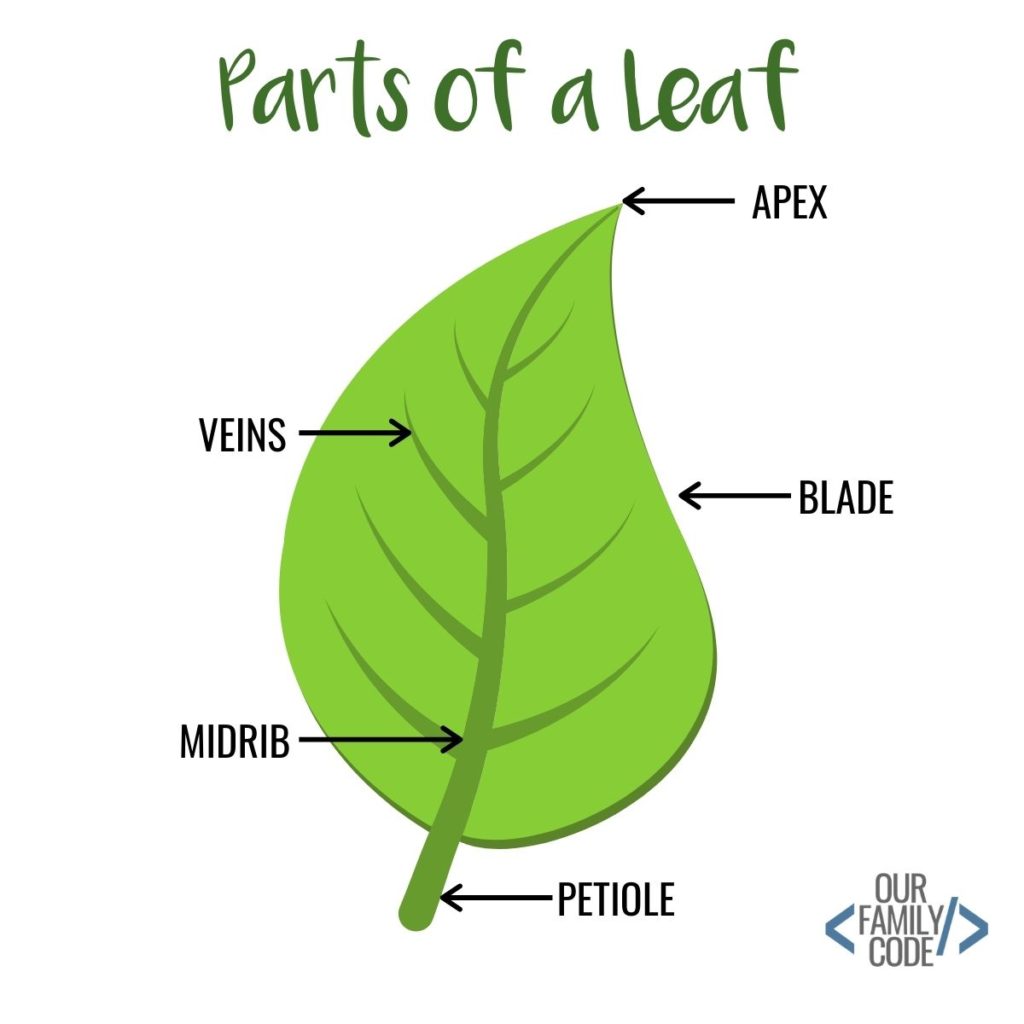
Chalk Pastel Leaf Rubbings STEAM Activity Our Family Code
Find Leaf Cutting Propagation stock images in HD and millions of other royalty-free stock photos, 3D objects, illustrations and vectors in the Shutterstock collection. Thousands of new, high-quality pictures added every day.

Gardening for Beginners 7 Easy Steps to Taking Plant Cuttings Dengarden
Table of Contents What are cuttings and why take them? The science behind propagation from taking cuttings The different types of cuttings Stem Cuttings Root and leaf cuttings Softwood stem cuttings Greenwood cuttings Semi ripe cuttings Hardwood stem cuttings Evergreen cuttings from evergreen plants Heel cuttings Mallet cuttings Leaf bud cuttings
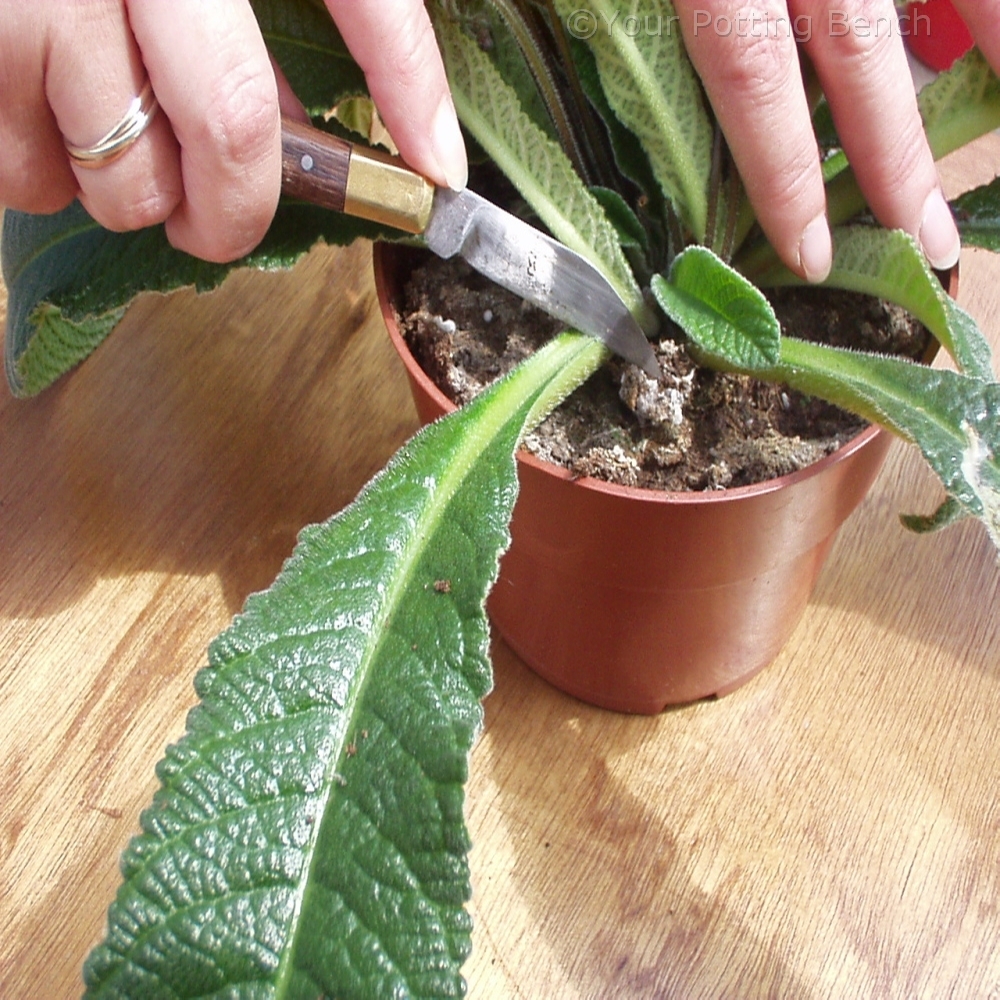
Hows to take Leaf Cuttings
The key techniques for propagation that will be highlighted are: leaf cuttings, stem cuttings, simple layering, and air layering.. (Refer to Diagram 1.) Procedure: 1. The best time to start leaf cuttings is when the plants are in a strong growth phase, usually from early summer to early fall. 2. Select a pot or flat of the appropriate size.

How To Propagate Houseplants With Leaf Cuttings
Remove a leaf and include up to 1 1 ⁄ 2 inches of the petiole. Insert the lower end of the petiole into the medium ( Figure 1 ). One or more new plants will form at the base of the petiole. The new plants are then severed from the original leaf-petiole cutting and the cutting may be used once again to produce more plants.

How to Grow Free Plants From Easy Cuttings Snip and Stick Dengarden
Download scientific diagram | Plants propagated from leaf bud cutting and terminal cutting of chrysanthemum after 21days The maximum number (4.44) of leaves per shoot was recorded when the.
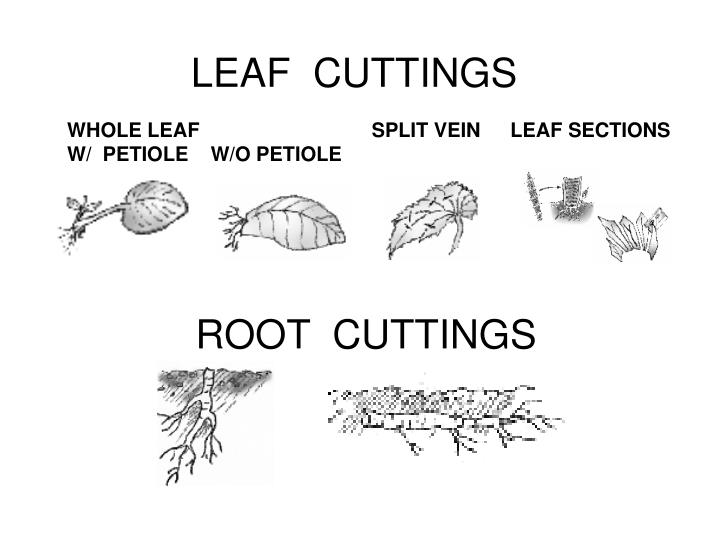
PPT PLANT PROPAGATION ASEXUAL PROPAGATION VEGETATIVE, CLONES CUTTINGS STEM TIP MEDIAL CANE
1. Leaf stalk cuttings: A mature adult leaf with stalk can be inserted in the rooting medium with the leaf-blade just above the surface. Plantlets develop at the base of the stalks, and these can be transplanted. In Peperomia and Saintpaulia, the leaf stalk is inserted in moist sand or compost (sand and peat) with the leaf blade above.

Parts of a leaf diagram. Preschool & PreK Science/Sensory Pinterest School, Classroom fun
Softwood Softwood cuttings are prepared from soft, succulent new growth of woody plants just as it begins to harden (typically May through July). Shoots at the softwood stage will snap easily when bent. The youngest leaves have not yet reached their mature size. Semi-hardwood
:max_bytes(150000):strip_icc()/make-more-plants-with-cuttings-1402474-V3-b7fbab04ad36414f8c6352ad73bf1488.png)
The Indoor Garden Guide Part 6 Propagation Charlie’s Blog
This diagram shows the whole leaf cutting process. Starting With Stem Cuttings Start softwood cuttings in spring to early summer from new growth. Use stem tip cuttings from healthy, close-noded shoots about 4-6 in/10-15 cm long. Should be soft and almost succulent—if bent they will snap or squash if pressed.

Leaf Cuttings Thrive
A 3- to 5-inch piece of stem is cut from the parent plant. The leaves on the lower one-third to one-half of the stem are removed. A high percentage of the cuttings root, and they do so quickly. Softwood cuttings are prepared from soft, succulent, new growth of woody plants, just as it begins to harden (mature).
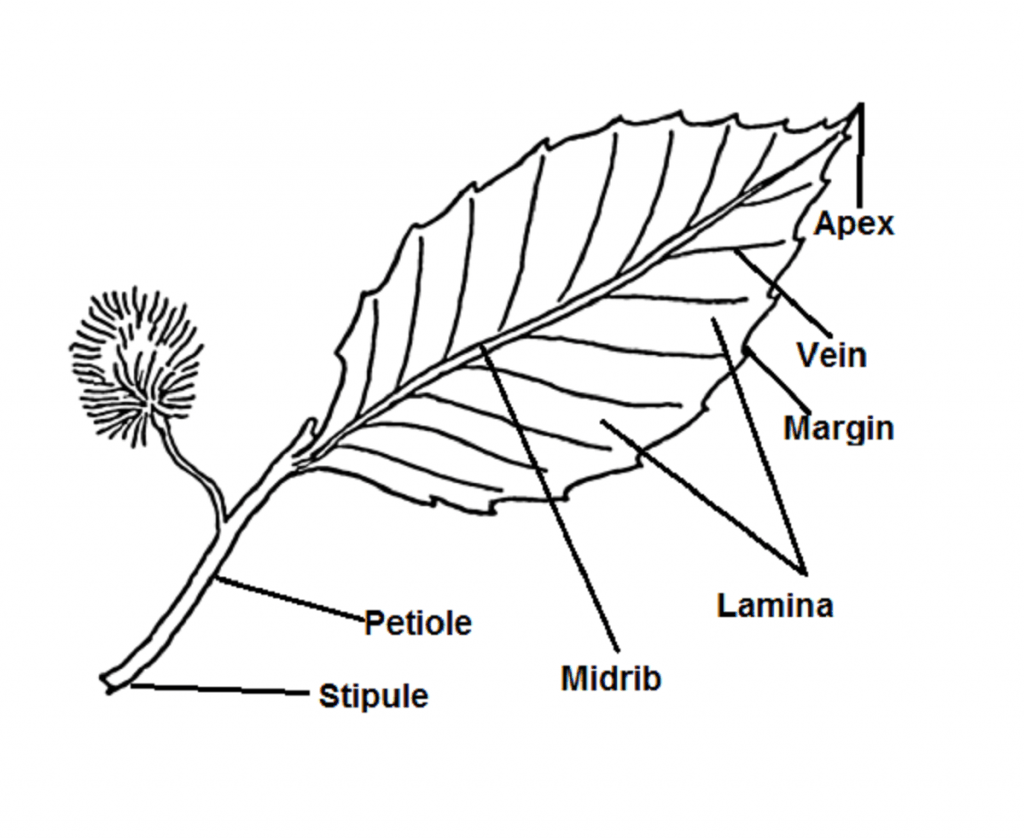
Ncert class 6 Science Getting to Know Plants Exercise answer Studdy
Important to know Where To Cut Snake Plant Leaves What Size Leaf Cuttings Let the Leaf Heal Off Steps to Take When Propagating Snake Plant Leaf Cuttings Where to Put the Cuttings Snake Plant Cuttings Care When New Growth Appears Once They've Rooted & New Plants Have Grown Propagating Snake Plant FAQs Snake Plant Propagation Video Guide

Leaf Detail Free Stock Photo Public Domain Pictures
Leaf section cuttings produce new plants utilizing a segment of the leaf blade. New roots and leaves form at the base of the cutting buried in the media, eventually creating a small plantlet. Leaf section cuttings work well for species such as snake plant (Sansevieria).
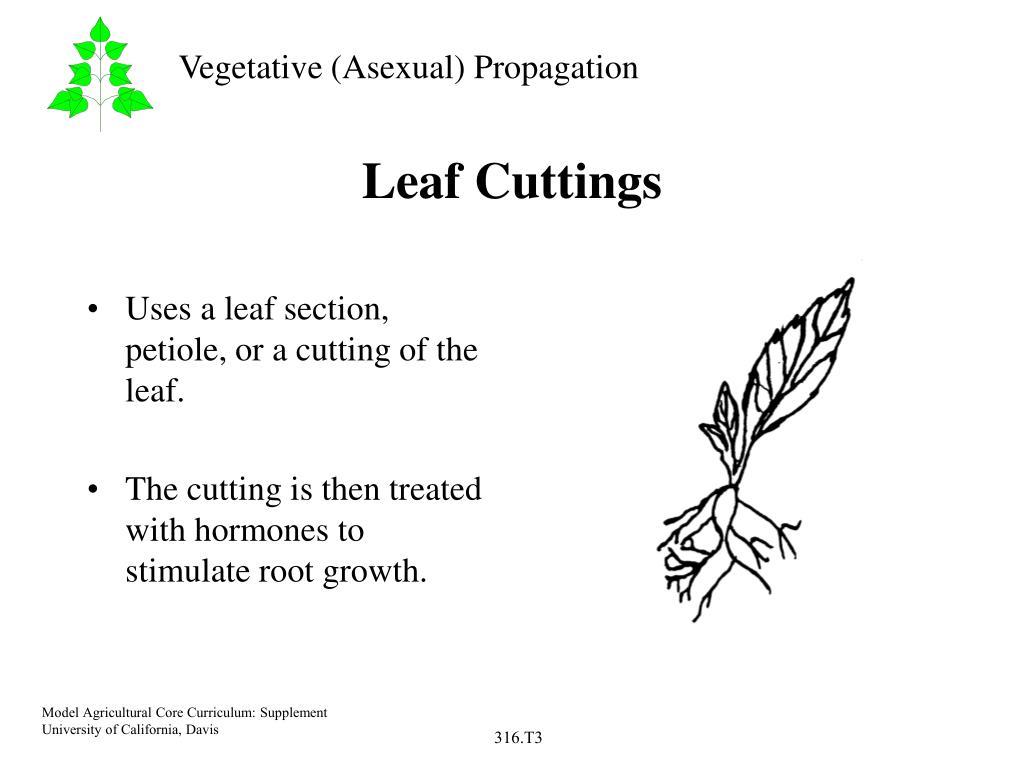
PPT Types of Vegetative Propagation PowerPoint Presentation, free download ID1426022
Leaf Parts. Leaves are generally composed of a few main parts: the blade and the petiole. Figure 13.1.2 13.1. 2: A leaf is usually composed of a blade and a petiole. The blade is most frequently the flat, photosynthetic part. The petiole is a stem that attaches the leaf blade to the main stem of the plant.

5 Example of Stem Cutting Plants DonaldtinRose
Figure 30.8.1 30.8. 1: Parts of a leaf: A leaf may seem simple in appearance, but it is a highly-efficient structure. Petioles, stipules, veins, and a midrib are all essential structures of a leaf. Within each leaf, the vascular tissue forms veins. The arrangement of veins in a leaf is called the venation pattern.